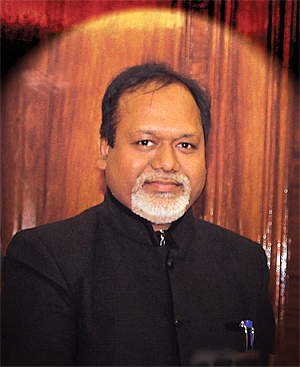INDIAN ARMED FORCES CHIEFS ON OUR RELENTLESS AND FOCUSED PUBLISHING EFFORTS

The insightful articles, inspiring narrations and analytical perspectives presented by the Editorial Team, establish an alluring connect with the reader. My compliments and best wishes to SP Guide Publications.

"Over the past 60 years, the growth of SP Guide Publications has mirrored the rising stature of Indian Navy. Its well-researched and informative magazines on Defence and Aerospace sector have served to shape an educated opinion of our military personnel, policy makers and the public alike. I wish SP's Publication team continued success, fair winds and following seas in all future endeavour!"

Since, its inception in 1964, SP Guide Publications has consistently demonstrated commitment to high-quality journalism in the aerospace and defence sectors, earning a well-deserved reputation as Asia's largest media house in this domain. I wish SP Guide Publications continued success in its pursuit of excellence.
- All about HAMMER Smart Precision Guided Weapon in India — “BEL-Safran Collaboration”
- US to sell $93 million precision artillery, Javelin and Excalibur projectiles to India
- US to sell $93 million precision artillery, Javelin and Excalibur projectiles to India
- India, Germany deepen defence ties as High Defence Committee charts ambitious plan
- True strategic autonomy will come only when our code is as indigenous as our hardware: Rajnath Singh
- India-Israel Joint Working Group Meeting on defence cooperation to boost technology sharing and co-development
- G20 Summit: A Sign of Global Fracture
Editorial

One of the biggest lessons coming out of the ongoing Russia-Ukraine war is that no army can fight without adequate weapons and ammunition. And if you are relying on other countries to support you with these, you are inherently at a distinct disadvantage.
There was a time when India also faced critical ammunition shortages with war wastage reserves as low as five to seven days, in some cases, relying on imports when required. However, a focus on Atmanirbhar Bharat to achieve a semblance of strategic autonomy has steered the Indian government to rework policy frameworks, tweak acquisition rules, open up the munition manufacturing to the private sector and make up long running ammunition and equipment deficiency. In this issue, our lead story by Major General Atanu Pattanaik (Retd) is on creating Atmanirbharta in Munitions.
Technology continues to be a game changer in all spheres of war fighting and newer and more lethal weapons and ammunitions are no different. Continuous changes, lead by technological improvements, are creating more lethal munitions. This transformation extends beyond the established dominance of precisionguided munitions (PGMs). We are witnessing a paradigm shift, with entirely new weapon systems and functionalities emerging that promise to redefine the nature of combat. In an article in this issue, Rohit Goel delves into the cutting edge of land warfare munitions, exploring the trends that are reshaping the battlefield of tomorrow.
India continues to enhance its military capabilities to ensure sovereignty and national security. The recently held Bharat Shakti Exercise stands as a testament to India’s commitment to modernising its armed forces and leveraging advanced technology to safeguard its borders and interests. Prime Minister Narendra Modi witnessed the tri-service exercise ‘Bharat Shakti’ at the Pokhran field firing range in Jaisalmer, Rajasthan along with delegates from more than 30 nations. A report by Manish Kumar Jha on the exercise is also a part of this issue.
Indian Army has raised an elite unit that will undertake research and evaluation of futuristic communication technologies like 6G, Artificial Intelligence (AI), Machine Learning and Quantum Computing for military use to cope with the changing nature of the battlefield. The unit, called the Signals Technology Evaluation and Adaptation Group (STEAG) is mandated to nurture technologies spanning the complete spectrum of wired and wireless systems. In his article, Lt General P.C. Katoch (Retd) feels that this will be a game changer in fostering self-reliance in high-end communication technologies.
All this and a lot more. Happy Reading!





